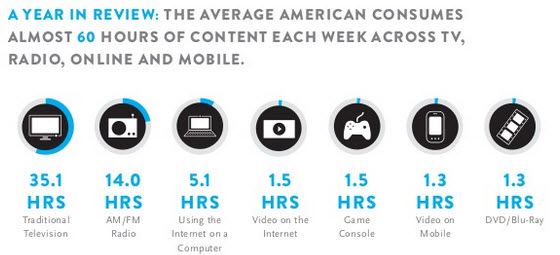2015 is coming. Time for ambitious brands with limited budgets to make really tough choices. We’ve just won our second award for Marketing Effectiveness, for a project that came in under $350,000. So we hope you’ll find this helpful:
Two things to know about changes in Social Media
Be aware that an algorithmic change will drastically reduce your Facebook exposure: Facebook is now public and under pressure to monetize, which means they want you to pay to advertise. To encourage this, they are reducing the number of fans who see your post – to about 3%. So if you have 20,000 fans, only about 600 will see any given post. That’s going to minimize the impact of your content, to say the least. So think about how much you’re budgeting for Facebook content creation, and decide whether it’s still worth it. As an social, consumer facing measure, your efforts still matter, but don’t expect wild response to every post, assuming you’ve enjoyed that in the past. Sorry.
So, given the change in exposure, more brands are assessing the benefits of handling social media in-house. If you’re thinking about it, here are some considerations:
- Designate a professional (not an intern) to the task, someone who knows how to read the analytics and understand what kind of content is getting attention.
- Establish a budget for visual resources.
All social media – Facebook, Pinterest, etc. – are increasingly visual. Repeated shots of your product are the kiss of death. Plan and budget for well-lit, well-photographed images, recipes, style shots, etc. If you wouldn’t stop to look at it, don’t assume others will. - Keep it varied, don’t talk about your brand all the time. Some managers follow a sort of 1/3,1/3, 1/3 rule: one post about the product, one post of a usage suggestion, one about a relevant event, such as holiday where you might serve or give your product.
- Keep it relevant. Random humor, re-posts of holidays, and pictures of cute animals are the hallmarks of an amateur. (As are the aforementioned package shots from an iphone.)
TAKEAWAY: Remember that even though social media are not paid media, they do require resources: Posting to social media may be free, but creating compelling content and gleaning new marketing insights from your data takes skill.
Rethink your budget
Re-think the traditional Annual Budget.
Of course you have to create one. So make your annual budget about long term investments in content assets: recipe creation, celebrity endorsement, sweepstakes or other attractors.
But leave a hefty chunk budget available to respond to change. Why?
What if you get a new customer in a key market? If you’ve built flexibility into your budget, you can activate pull-through with a geotargeted banner campaign timed to on-shelf. This is especially effective for small brands, where a single chain sale can change the world. Give yourself room to move.
Anticipate increased competition – which could for example mean higher PPC costs. The price of success is more competition: which means you should expect your costs to increase if things are going well. Budget at least a 10% increase over the course of the year.
TAKEAWAY: Today’s budgets need to be flexible, to adapt to changes in technology, competition, and opportunity. Be willing to reassess every few months, and leave something in the tank for later.
ADD a new intiative or two
Build awareness with digital display. Heard that digital ads are no good? Guess what? Whether people click through or not, research shows that even a nano-second of exposure is enough for the brain to register a brand name. So even if you don’t see much click-thru – that’s okay. See what happens with your branded search, because that’s where the results will show up.
Sample Smarter. Sampling is very popular with brand managers, but consumers don’t remember how your free bite of cheese was different from the next day’s free bite of cheese. If you really want to get into the consumer’s wheelhouse, focus on sampling options with:
- strong associative memory, like location (think power bars in the Gym),
- strong involvement, like an activity, (think pairings, cooking demos
- and strong follow-up (goody bags, coupons, email)
Integrate traditional media. Major brands are moving back to television, radio, and even print. Why? Mass media deliver mass awareness. There’s no getting around that. And smart planners understand that each medium has its benefits. Here’s the Q3 2013 Nielsen numbers:
TAKEAWAY: You have dozens of ways to reach your consumer. Which one it most important? The one that’s important to her. So be everywhere, because she is.
Be a Big Fish in a Smaller Pond
Sometimes the problem isn’t the scope of your marketing activities – it’s the scale. Could a single-market focus help you show a win? Our Total Market Takeover won 2 international awards, but more important – it lifted sales a whopping 54%. How? By focusing the budget on one major city, we were able to afford – and effectively mix—event sampling, local TV placement, Pandora, blogging and digital display advertising. Other social media kept up our national presence. At the end of the campaign, the client had meaningful sales, a working model of a media mix, and a big success story to tell in other markets.
Hope these insights help you get going. And let us know if you need our help.

